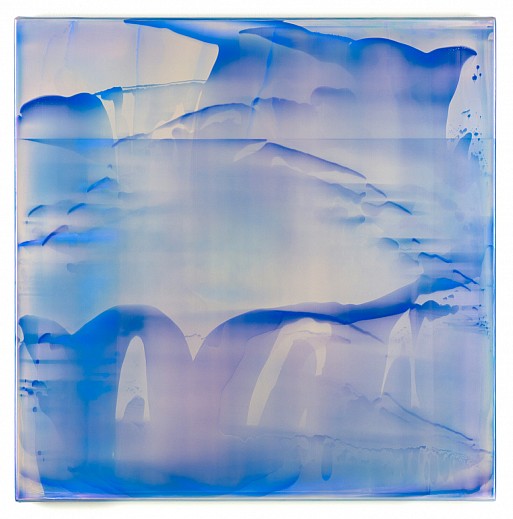
Q and A with artist, James Lumsden
January 15, 2023 - An Lanntair, Isle of Lewis, Scotland
How do you start your creative practice?
I originally studied and worked as a graphic designer and have been painting for over 30 years. I work between studios in Edinburgh and Point on the Isle of Lewis, travelling between studios on a regular basis and developing separate yet related series of work in each studio. The Resonance series was created in my Edinburgh studio, the recent work developing out of intial works started in 2017. These new works continue to explore concerns of light, depth and mark which have been central to my work over the past two decades. In parallel I developed The Point Series in my studio in Lewis - although the process is similar, this series reflects a sense of place and an allusion to landscape which has come out of working on the island.
Tell me about the process behind your work?
On a smooth gessoed canvas I build multiple layers of acrylic paint mixed with various mediums and gels. Using a historic glazing process, I apply up to 30 or more thin layers – building both deliberate and accidental marks and gestures, concealing or revealing these marks with thin translucent glazes. The paint is applied with brushes and skimmed, pulled and manipulated with various plastic and metal implements. In the most recent work I use interference and iridescent colors applied in thin glazes. These are active and change and slightly shift the color as the viewer moves around the work, or in changing light conditions.
Where do you find your greatest inspiration?
As the work is found in the process, previous paintings and experiments inspire new and future possibilities. In each new painting or series I will try and develop something that worked in a preceding work. Inspiration of course also comes from looking at other artists, historical and contemporary, and amongst other artist friends and colleagues.
What themes are most important to you?
I aim to create open paintings which are positive and affirming. I want to see something brought to life, struggled for, with a sense of it having its own history, and reflective of the time spent on its creation. I often use titles related to music, such as Fugue, Contrapuntal, Resonance, etc. as analogous to the process, in the hope that the viewer will respond to the paintings as they would do to a piece of music, without the need for words. The paintings are not about music, but aspire to the condition of music. Like music I’m hoping the work instils some sort of feeling in the viewer.
What does light mean to you?
Light is central to the history of painting – for me it is the soul of painting. I am fascinated by the depiction of light historically and I am attracted to artists who use light as a primary subject in their work - Caravaggio, Vermeer, Turner, Rothko through to today with artists as varied as Joseph Marioni, Pierre Soulages and Ornulf Opdahl. I aim to imbue my paintings with an internal light. Not a depiction of light, but a sense of light emanating from within the painting. I have a quote from the painter Ross Bleckner pinned to my studio wall which summarizes what I strive for in my work:
‘Life is short. Life goes fast. And what I really want to do in my life is to bring something new, something beautiful and something filled with light into the world. I try to think of that every day so that I can remember why I am coming to my studio.’
Download Article (PDF)
Back to News
